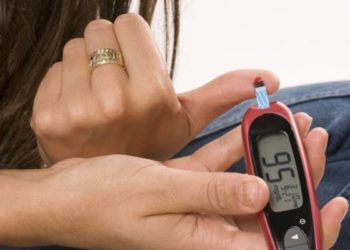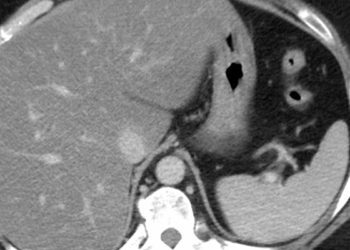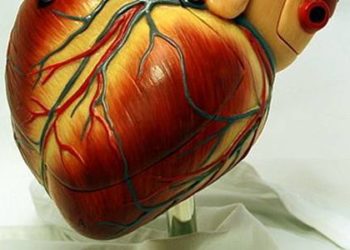Skin patch delivers insulin in response to hyperglycemia [PreClinical]
1. Glucose-responsive vesicles (GRVs), nanoscale polymer spheres loaded with glucose oxidase (GOx) enzyme, released insulin cargo in response to hyperglycemic conditions in vitro.
2. In a mouse model of type 1 diabetes, GRVs were delivered transcutaneously via polymer microneedle (MN)-array patches and normalized blood glucose levels over several hours without risk of hypoglycemia.
Evidence Rating Level: 2 (Good)
Study Rundown: Diabetes, characterized by the inability of insulin to effectively break down glucose in the blood, affects hundreds of millions of people worldwide, with numbers increasing due to rising rates of obesity. Treatment usually involves painful needle pricks to measure blood glucose levels and insulin injections to treat hyperglycemia. An alternative therapeutic approach is a closed-loop system that can both monitor blood glucose concentrations and deliver insulin as needed.
Researchers in this study engineered GRVs, GOx and insulin molecules encapsulated in a biocompatible polymer shell that dissolves in oxygen-limited conditions. GOx was used as a sensor and trigger for insulin release because its enzymatic reaction with glucose consumes oxygen. Incubating GRVs in hyperglycemic conditions (HG) led to decreased oxygen concentrations. This was followed by a drastic reduction in GRV diameter and significantly higher insulin release as compared to incubation in normal glucose concentrations (NG), suggesting GRV disintegration. In a mouse model of type 1 diabetes, treatment with GRV-loaded MN-array patches resulted in prolonged lowered blood glucose levels as compared to treatment with MN-array patches containing free insulin. Serial administration of two lower-dose GRV-loaded patches was similarly effective without inducing hypoglycemia. In contrast, animals were at risk for hypoglycemia when treated with a GRV-loaded patch followed by an insulin-loaded patch.
Further studies on safety and effect duration are needed before GRV-loaded MN-array patches can be used clinically. Overall, this responsive insulin patch represents a biocompatible, noninvasive, and effective approach to glucose control which may in turn prevent more serious consequences of diabetes.
Click to read the study in PNAS
Relevant Reading: Materials for Diabetes Therapeutics
In-Depth [animal study]: GRVs shells that encapsulated GOx and insulin were composed of hyaluronic acid (HA), a molecule widely used for biological applications, linked to hydrophobic 2-nitroimidizole (NI). NI is reduced to hydrophilic 2-aminoimidazole under hypoxia, so GOx’s utilization of oxygen in the presence of glucose triggered GRV dissolution.
Oxygen concentration plummeted over the course of 10 minutes when GRVs were placed in HG (400 mg/dL glucose), with a smaller reduction in NG (100 mg/dL glucose). GRV average diameter decreased from 118 nm to ~4 nm after 24 hours in HG, implying dissolution and release of cargo. Further in vitro experiments showed that saturation of insulin release occurred after ~6 hours, and total insulin released reached approximately 250 µg/mL in HG as compared to under 100 µg/mL in NG (p<0.05 from 1-24 hours, n=3).
In animal experiments, GRVs were delivered transcutaneously using an HA-based 11×11 array of MNs measuring 36 mm2. In streptozotocin-induced type 1 diabetic mice, administering GRV-loaded MN-array patches at a 10 mg/kg insulin concentration lowered blood glucose levels from ~550 mg/dL to ~200 mg/dL for 4 hours, with levels remaining significantly lower than those in other treatment groups for 9 hours total (p<0.05, n=5). Importantly, administration of insulin-loaded patches had a shorter effect, with levels returning to baseline at 5 hours. Two GRV-loaded patches, each containing 5 mg/kg insulin, given one hour apart lowered glucose levels for 8 hours (p<0.05 compared to a single application, n=5); however, following the first GRV-loaded patch with an insulin-loaded patch further decreased glucose levels to borderline hypoglycemia. When given to healthy mice, insulin-loaded patches resulted in hypoglycemia risk while GRV-loaded patches did not change blood glucose levels.
Image: PD
©2015 2 Minute Medicine, Inc. All rights reserved. No works may be reproduced without expressed written consent from 2 Minute Medicine, Inc. Inquire about licensing here. No article should be construed as medical advice and is not intended as such by the authors or by 2 Minute Medicine, Inc.







